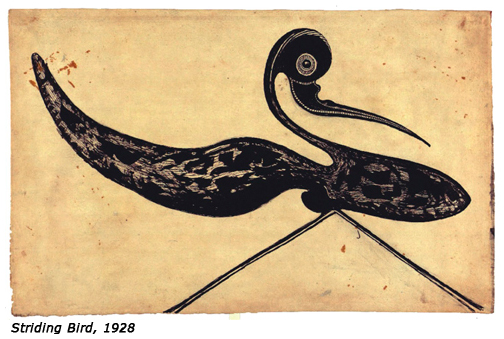- Publisher's Note
- Editorial
- In Conversation with Kanishka Raja
- Definitional Lack in an Inclusive World: Cutting Edge as Responsible Art
- Democratization Through Cutting Edge Art
- Mumbai for Cutting Edge
- Moments in Time (And a Little While After)
- In Transition
- Tip of Our Times
- Srishti School of Art, Design and Technology – A Cradle for Creative Excellence
- Cutting the Edges of Architecture
- Overview Cutting Edge
- The Matter Within: New Contemporary Art of India Featuring Photography, Sculpture and Video
- Generation in Transition: New Art from India
- Indian Master Painters at India Art Festival
- Life, Luxury & the Avant-Garde
- Mother India: The Goddess in Indian Painting
- The Last Harvest: Paintings of Rabindranath Tagore
- Asia Society Museum Presents Exhibition of Rabindranath Tagore's Paintings and Drawings
- Stieglitz and his Artists: Matisse to O'Keeffee
- Beauty of Unguarded Moments
- Across Times, Across Borders: A Report on the Chinese Art Exhibition
- A Summer in Paris
- Random Strokes
- The Emperor’s New Clothes and What It Really Means
- Understanding Versus Adulation
- What Happened and What’s Forthcoming
- Occupy Wall Street, The New Economic Depression And Populist Art
- Unconventional with Witty Undertones
- Narratives of Common Life and Allegorical Tales In Traditional and Modern Forms the Best of Kalighat 'Pats'
- Colours of the Desert
- Unbound
- I Am Here, An Exhibition of Video Self Portraits at Jaaga
- Staging Selves: Power, Performativity & Portraiture
- Venice Biennale Outreach Programme A Circle of Making I and II
- Cartography of Narratives, Contemplations on Time
- Joseph Kosuth: The Mind's Image of Itself #3' A Play of Architecture and the Mind
- Maharaja: Reminiscing the Glorious Past
- Art from Thirteen Asian Nations
- Tibetan Arms and Armor at Metrpolitan Museum of Art
- The Art of Poster Advertisement
- Unusual Angles and Facets of Museum Buildings
- Elegant Fantasies
- Art Collection and Initiatives
- Art Events Kolkata
- Mumbai Art Sighting
- Art Bengaluru
- Musings from Chennai
- Preview
- In the News
ART news & views
Asia Society Museum Presents Exhibition of Rabindranath Tagore's Paintings and Drawings
Volume: 4 Issue No: 22 Month: 11 Year: 2011
Report
New York. Rabindranath Tagore (1861-1941) is lauded around the world as a poet and writer, yet few outside India know that he was also a highly regarded visual artist. Marking the 150th anniversary of the year of Tagore's birth, Asia Society Museum, New York presented an exhibition comprising more than 60 works on paper, drawn from three collections in India. Many of the works have never been shown in the United States. The exhibition started from 9th September to 31st December, 2011 and is being curated by Professor R. Sivakumar of Visva Bharati University. It is co-organized by the National Gallery of Modern Art, Ministry of Culture, Government of India. The exhibition is accompanied by a fully illustrated catalogue, edited by Professor Sivakumar and essays by leading scholars on Tagore's writing, philosophy and artistic practice.
 The exhibition is divided into four thematic sections. A section titled The Beginning looks at the origins and development of his drawing and painting. Beyond the Pages explores his landscape paintings. Tagore's landscapes were less a depiction of actual scenery and more a focus on rhythm and the universal spirit of life that he felt permeated all of nature. Many of his works depict acrobatic figures that sometimes morph into various forms found in nature. Discovery of Rhythm considers how his creative work in other fields, particularly music and dance, enabled Tagore to project movement and gestures into pattern, forms and fields of color in his drawings and paintings.
The exhibition is divided into four thematic sections. A section titled The Beginning looks at the origins and development of his drawing and painting. Beyond the Pages explores his landscape paintings. Tagore's landscapes were less a depiction of actual scenery and more a focus on rhythm and the universal spirit of life that he felt permeated all of nature. Many of his works depict acrobatic figures that sometimes morph into various forms found in nature. Discovery of Rhythm considers how his creative work in other fields, particularly music and dance, enabled Tagore to project movement and gestures into pattern, forms and fields of color in his drawings and paintings.
The Faces of the World section explores Tagore's representation of the human face, the most frequently recurring form in his painting. Some may resemble Peruvian or Indonesian masks that he saw during his travels but most are recognizable as universal types or bhab (a character, spirit, or quality in Bengali). They may be viewed as an extension of Tagore's own emphasis on commonality and coexistence, rather than divisions based on caste, culture and country.

The exhibition also included programmes like Tahmima Anam's discussion The Good Muslim, the second novel in her planned “Bengal Trilogy,” with Samina Quraeshi, on September 13th. The Inaugural lecture was by Dr. Amartya Sen, Harvard University, on the revival of the ancient Buddhist University Nalanda.